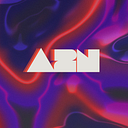Nestjs & Pino — the one minute setup
The purpose of this story is to make a ready to use set-up with Pino on a Nestjs api.
🚀 Let’s go for the setup !
I consider that here you have already installed nestjs. If it is not the case take the time to take in hand the installation of it via the official doc.
1° step — Install deps
First you nedd to install two package :
- the pino package for nestjs
yarn add nestjs-pino - an “embellisher” which will make the logs more readable for development
yarn add --dev pino-pretty
2° step — replace the nestjs default logger
it is not a real replacement, to create a logger which actually replaces the nestjs logger see here
For that you just need to put the LoggerModule to the app.module !
In this point you have :
- a log for each request made on your api
- a possibility to make a log with the following code (example):
Here the log look like this :
This is not very clear isn’t it ?
To make this clearer let’s go to step 3 !
3° step — Ho pretty logger !
The second package you have installed is for that !
You just need to put some options on your LoggerModule. Easy no ?😁
The full list of possible option is here.
In my example i set the following option :
- colorize : if is true the color change in function of the call (
.logis green,.warnis orange, etc…) - levelFirst : if is true the level (info, error, …) is the first word on the line
- translateTime : allow to transform the
timeindex in a readable format via the dateformat package
And the log look like better (attention the color corresponds to my console theme) !
4° and last step — Pretty ? Yes ! But not in prod
Why ? Simply because of the storage space. The non “pretty” format allows you to store everything on a line, which greatly saves storage space!
Again it is rather simple, we will use the variable NODE_ENV.
Just a reminder :
the variable NODE_ENV can be set-up in the launch scripts of the app. For example for windows :"dev:win": "SET NODE_ENV=developement&& nest start --watch"
And well done folks ! You have Pino in your Nest 👍
The advantage of pino is found in what it offers in addition to the nest logger, take the time to look at the doc.
